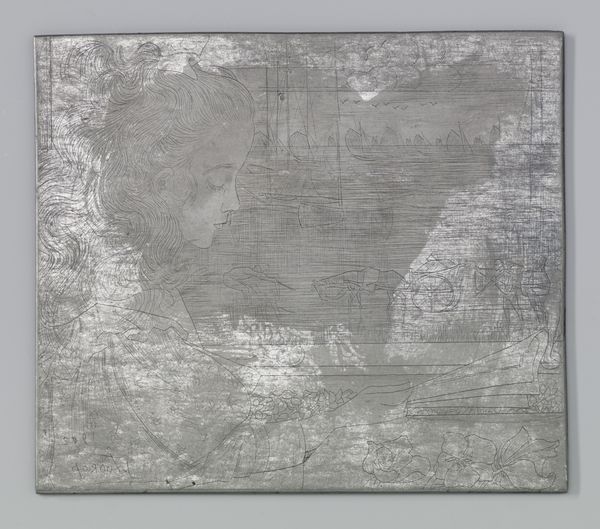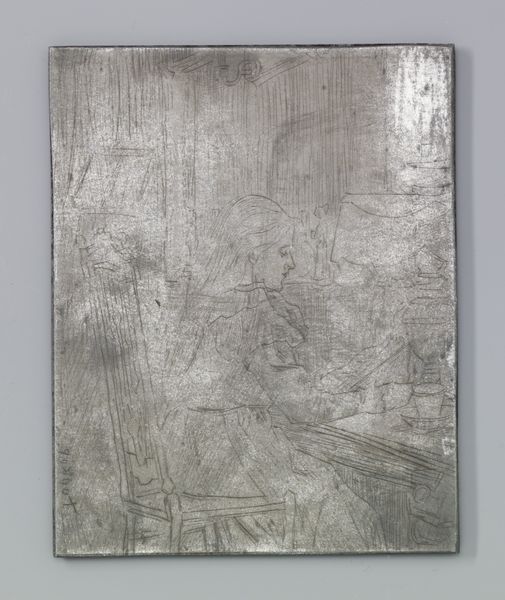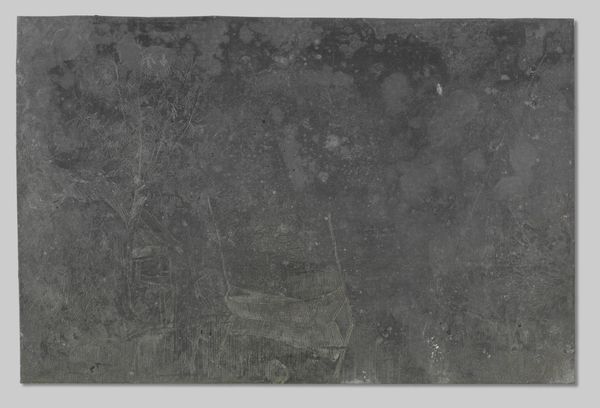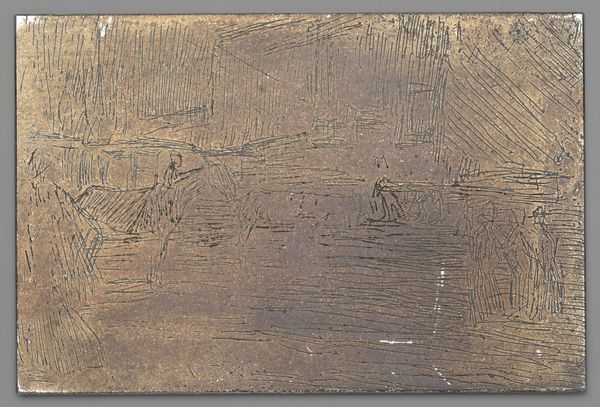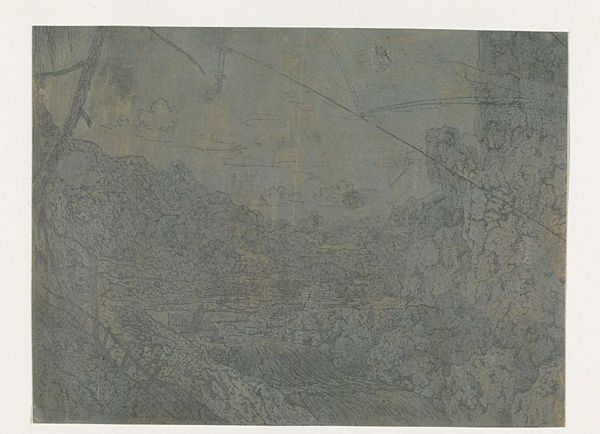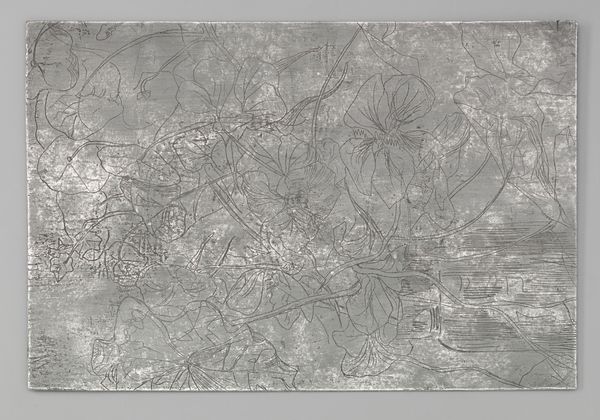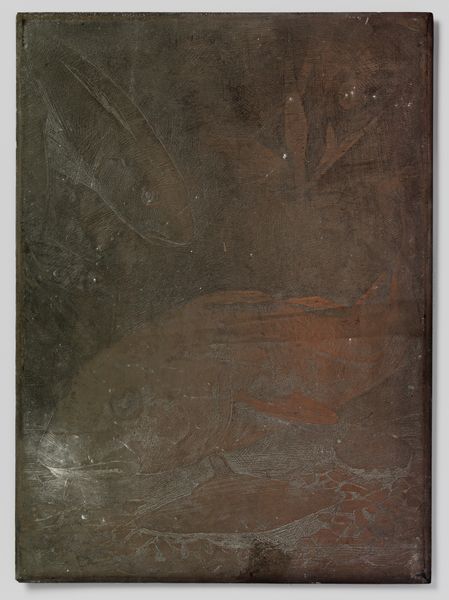
drawing, print, etching, pencil
#
drawing
# print
#
impressionism
#
etching
#
landscape
#
pencil
#
line
#
realism
Dimensions: height 100 mm, width 150 mm
Copyright: Rijks Museum: Open Domain
Curator: This is Floris Verster's "Polderwater," created around 1890. It's a wonderful example of his early printmaking, rendered in etching and pencil. Editor: My first impression is stark. The monochrome palette and almost skeletal lines give it a haunting quality, a desolate emptiness. Curator: The etching technique, with its network of fine lines, certainly contributes to that starkness. But look closely at how those lines define the horizon, the sky, the subtle reflections in the water. It is an intriguing distillation of the Dutch landscape. Editor: Absolutely. But isn't the process itself telling? The labor invested in etching these lines, the very materiality of the metal plate bearing the image...it underscores the physicality inherent in capturing this ephemeral scene. We tend to ignore all of this "necessary" work. Curator: That is an interesting point. Consider the way Verster uses the etching process itself. Note how the lines aren't merely descriptive. They generate their own kind of atmospheric perspective through density and direction. You mentioned landscape, the lines form a visual code of sorts to represent flatness, water, and depth. Editor: Yes, and this points to how Verster, a wealthy painter in the Hague School, may have appropriated printing, associated it with mass media and with lower class labor, into his own practice. How interesting. The impressionist paintings would become something made in metal; an object for consumption as much as contemplation. Curator: An incisive reading! And to see him playing between the Realist concern for accurately representing the visible world with the subjective, fleeting qualities favored by the Impressionists! It's a remarkable visual dialogue occurring right here, on this metal plate. Editor: Indeed. I initially saw emptiness, but the work now appears incredibly full. Verster compels the viewer to appreciate both the artist's craft and the cultural values imbued within his chosen process and landscape. Curator: Precisely. I will be sure to revisit my analysis of Verster through this lens. Thank you.
Comments
No comments
Be the first to comment and join the conversation on the ultimate creative platform.



